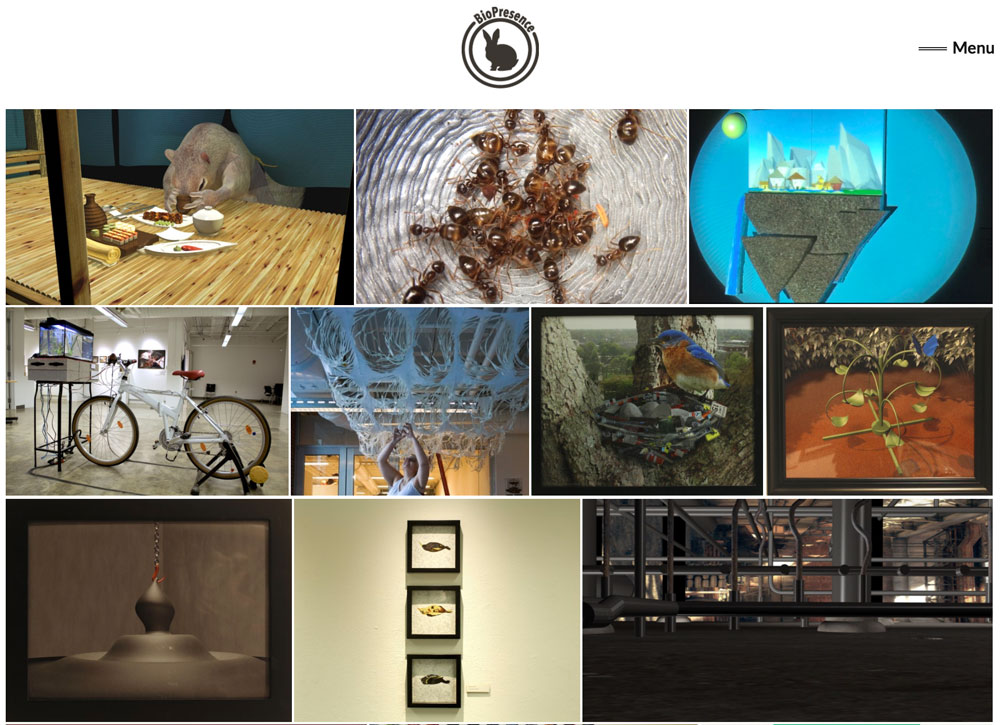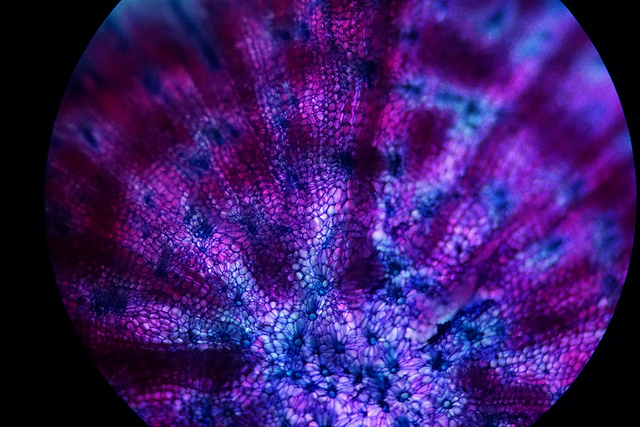
Un-becoming Carbon: Traveling in Intercellular Space focuses on the importance of carbon sequestration by plants. The viewers enter the plants’ intercellular space, beginning their journey as a molecule of carbon dioxide, donating their carbon to the plant’s body, and emerging as life-giving oxygen. The interactive installation explores this process through physical, audio and virtual experiences. Entering a giant leaf through a stomatal opening, the viewers are surrounded by sculptural plant cells. Palisade Parenchyma droop from above while below Spongy Parenchyma and Stomata line the floor. Soft structures invite viewers to rest and continue their experience by entering virtual reality. An exploration between the macroverse and the microverse begins in a forest where the viewers take on the role of a carbon particle being absorbed into a leaf; first traveling through intercellular space, then moving into a cell to become part of its substance.
Concluding the experience, visitors are invited to adopt and nurture a living plant propagule to continue its carbon-binding work in their own home. Plant awareness posters act as a souvenir from their intercellular space travel.
This multimedia art installation was collaboratively created by the students and professors of an Art & Science class (Art 5001) by Ellie Bartlett, Jacklyn Brickman, Ashley Browne, Amanda Buckeye, Diva Colter, Mona Gazala, Youji Han, Saba Hashemi Shahraki, Brice Jordan, Liam Manning, Iris Meier, Brooke Stanley, Lily Thompson, Zachary Upperman, Stephen White, Taylor Woodie, and Amy Youngs.

Presented as part of the Art & Technology exhibition, Non-Human Intelligence.
Come out and celebrate with us at the opening on December 4th, 5 – 7pm.
Hopkins Hall, the Ohio State University – campus map and transportation
 Art & Technology exhibition
Art & Technology exhibition


 Trans-Species Skins is a themed art exhibition exploring skin as a metaphor and substance that transcends species categories. Skin is the multilayered and multipurpose organ that shifts from thick to thin, tight to loose, wet to dry, across the landscapes of bodies and machine interfaces. Natural and artificial skin responds to heat, cold, pleasure and pain. It lacks boundaries and flows seamlessly from exposed surfaces to our internal cavities real and virtual. It is a self-repairing, semi-permeable surface, with inner layers that are flush with nerves and glands, sensors and chips. New tools allow artists, designers, and engineers to look at a new emerging organicism that takes shape across the surface of the grown and manufactured. Skins can modulate meaning, touch, function and can provide feedback and change with light and heat. Flexible membranes embedded with sensors and materials are bent, impregnated, or inflated to become structure. Re-skinning allows deceit; the non-living can approximate life, and the living can appear otherwise.
Trans-Species Skins is a themed art exhibition exploring skin as a metaphor and substance that transcends species categories. Skin is the multilayered and multipurpose organ that shifts from thick to thin, tight to loose, wet to dry, across the landscapes of bodies and machine interfaces. Natural and artificial skin responds to heat, cold, pleasure and pain. It lacks boundaries and flows seamlessly from exposed surfaces to our internal cavities real and virtual. It is a self-repairing, semi-permeable surface, with inner layers that are flush with nerves and glands, sensors and chips. New tools allow artists, designers, and engineers to look at a new emerging organicism that takes shape across the surface of the grown and manufactured. Skins can modulate meaning, touch, function and can provide feedback and change with light and heat. Flexible membranes embedded with sensors and materials are bent, impregnated, or inflated to become structure. Re-skinning allows deceit; the non-living can approximate life, and the living can appear otherwise.








